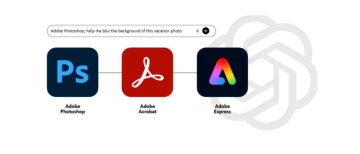Tech giant IBM is attempting to take a more active role in the rapidly developing fields of AI and hybrid cloud management. They are spending $6.4 billion to buy the infrastructure automation tools company HashiCorp. Giving businesses a means to manage the increasing complexity of contemporary applications that depend on both conventional computing and cutting-edge AI is the main goal of this agreement.

HashiCorp: Why?
The main attraction of HashiCorp is its array of products, which include Terraform, a revolutionary tool for infrastructure provisioning, and others that simplify infrastructure management.
Principal Items of HashiCorp
A strong toolkit is provided by HashiCorp, which is especially helpful for managing infrastructure in a hybrid cloud environment:
- Terraform: This market-leading tool automates cloud resource provisioning and management through infrastructure as code (IaC). Terraform provides consistency and repeatability across various cloud platforms by defining infrastructure in code.
- Vagrant: Vagrant makes it easier for developers to set up and create portable virtual development environments. Because of this, developers can operate in uniform settings regardless of how their local machines are configured.
- Packer: For effective deployments, automating the production of standardised machine images is essential. Packer facilitates this procedure and guarantees uniform configurations in all cloud environments.
These tools are necessary for businesses to automate multi- and hybrid-cloud deployments, manage their infrastructure efficiently, and maintain configuration consistency.
What is IBM's long-term strategy?
IBM views this acquisition as a means of assisting companies in managing the ever-expanding dispersion of data centres and applications throughout various environments (public, private, and on-premises). This is under even more pressure due to the rise of AI, which makes HashiCorp's tools even more crucial.
Recognising cloud computing
Envision an enormous warehouse stocked with software, storage lockers, and powerful computers. This warehouse is shared by multiple companies, much like an office space that is rented. That is the fundamental concept of cloud computing. Instead of every business owning a physical warehouse (data centre), they can lease resources and space from cloud service providers such as Microsoft Azure or Amazon Web Services (AWS).

The following are some advantages of cloud computing:
- Cost-effective: Businesses avoid the up-front costs associated with purchasing and maintaining their own hardware and software by only paying for the resources they actually use.
- Scalable: Need additional processing or storage capacity to handle a sudden increase in traffic? You can simply scale up or down the cloud to suit your needs.
- Flexible: You can work remotely and collaborate with others by accessing your data and apps from any location with an internet connection.
- Safe: To protect your data, cloud providers make significant investments in security protocols.
The global cloud computing market is predicted to reach an astounding $821.7 billion by 2028, according to a recent report by Marketsand Markets, underscoring the enormous growth potential in this industry.
Cloud Computing: Benefits and Drawbacks
Many businesses find cloud computing to be a great option, but it's important to weigh the benefits and drawbacks.
Benefits
- Savings: Upfront purchases of pricey gear or software are not necessary.
- Scalability: You can quickly scale up or down resources based on changing needs.
- Flexibility: Use any location with an internet connection to work.
- Security: Strong security features are provided by cloud providers.
Automatic software updates, data backup and restoration, teamwork tools, and possibly infinite storage are additional advantages.
Drawbacks:
- Performance: Relying too much on internet speed may result in sporadic lags.
- Technical Problems: Although they are uncommon, cloud outages can cause delays in your work.
- Security: Despite being secure, data breaches are always possible.
- Dependency on the Internet: Without the internet, you cannot access cloud resources.
- Limited Control: Your data and services are provided by a third party.
- Potential Costs: Although generally inexpensive, complex requirements may result in large expenses.
AI in the Cloud: Boosting Your Enterprise
Let's now discuss AI and how cloud computing works with it. Imagine having a cloud-based, extremely intelligent assistant that can analyse data, automate tasks, and even assist you in making better decisions. That is cloud computing's AI potential.

Here are a few applications for AI:
- Automate tasks: By automating repetitive tasks, you can free up your team's time.
- Data analysis: AI is capable of analysing large datasets and extracting insightful information.
- Predictive analytics: uses historical data to forecast future trends and consumer behaviour.
- Real-time analytics: Use your data to gain immediate insights that will help you make wise decisions.
Although AI in the cloud has many advantages, there are some drawbacks to take into account:
- Security Risks: Security is an issue with all data, but cloud providers have cutting-edge security measures.
- Performance: Cloud resource sharing can occasionally affect performance, but AI service providers are always enhancing their effectiveness.
- Technical Outages: Disruptions to AI functions can occur even with the most dependable cloud services.
- Internet connectivity: For AI to function properly, a robust and steady internet connection is essential.
Businesses can use these potent technologies wisely if they are aware of the benefits and drawbacks of cloud computing and AI integration.
Uniting for a Hybrid Cloud Superpower
The objective is to create a super-platform for hybrid cloud management by combining IBM's current cloud and AI portfolio (including RedHat and Watson) with HashiCorp's infrastructure strength. This platform will be made to function with various cloud service providers (such as AWS, Microsoft Azure, and Google Cloud Platform) and manage workloads that are AI-powered as well as traditional. According to a Statista report, Amazon AWS leads the pack as the Cloud leader.
_1714035888.jpeg)
Implications for the Industry
For IBM, this move is significant. It improves their standing in important emerging markets like artificial intelligence (AI), cloud security, and Red Hat, a top supplier of open-source business software. They'll be more capable of meeting the changing demands of IT executives and developers while competing with larger cloud service providers. Ultimately, it's about creating a one-stop shop for businesses to manage their complex hybrid cloud environments with security and flexibility.
Common Instances of Cloud Computing
Numerous ways that cloud computing affects our daily lives are often invisible to us. Here are some instances:
- storing documents and images digitally (Dropbox, Google Drive)
- Utilising email services (Yahoo Mail, Gmail, and Outlook)
- streaming films and music (YouTube, Netflix, Spotify)
- Financial services and online banking
- Social media networks (Twitter, Instaram, and Facebook)
- Making use of navigational apps (Waze, Google Maps)
- Online purchasing (Ebay, Amazon)
_1714036209.png)
The capacity of cloud computing to deliver scalable, on-demand resources has revolutionised the way we interact, work, and access information.
In summary
IBM is making it very evident that they are fully committed to AI and hybrid cloud as the direction of business technology by acquiring HashiCorp. By combining their respective strengths, the two companies hope to develop a ground-breaking platform that will transform the way businesses use AI applications and manage their cloud workloads. This may result in enhanced decision-making, operational efficiency, and a notable increase in business agility.
Photo credits: multiple(IStock, Freepik)
ⒸCopyright 2024. All Rights Reserved Powered by Vygr Media.























